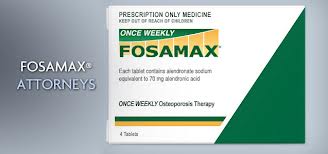The Success Of The SDNY Mediation Program
By admin on January 17, 2014
 The Mediation Program of the SDNY provides litigants in commercial litigation with an opportunity, generally early in their litigation, to resolve their disputes without going through the expense of full-blown discovery and the uncertainty of trial.
The Mediation Program of the SDNY provides litigants in commercial litigation with an opportunity, generally early in their litigation, to resolve their disputes without going through the expense of full-blown discovery and the uncertainty of trial.
As reflected in the Mediation Program’s recently released Annual Report , individual judges referred 113 cases in general civil litigation (which does not include employment and civil rights claims). Of that number, a successful resolution in mediation came about in 60% of the cases referred, an increase from 53% in 2012. Considering the determination with which business disputes are litigated, a 60% successful rate is a remarkable achievement.
Local Civil Rule 83.9, effective January 1, 2014, and other actions taken by the Court, have resulted in a more flexible, streamlined operation. For example, in 2013, mediations could be conducted in the mediator’s law office for the first time. In certain circumstances, conducting the mediation in an office, rather than at the courthouse, may result in greater convenience to the parties and their clients. It certainly makes the mediator’s job easier.
Rebecca Price, the Mediation Supervisor, has shared with the 396 pro bono mediators in the program some of the favorable feedback she has received from program participants. Some comments from lawyers include the following:
“I think the mediator did a great job helping me where he presented me with
alternative strategies in going back with counter offers, and why they
should be higher rather than lower. Most of the numbers I presented were
fair, but the case had some problems and though I think my client should
have been offered more money – the final number was fair, and the employer
threw in a positive recommendation, something I’d never seen before. All in
all I felt it was a fair settlement and I learned from the mediator.”“Given that opposing side had not responded to any attempts at negotiation
over several months, this was necessary and we accomplished in 3 hours what
we could not in several months.”“The mediator and the Mediation Program were instrumental in settling the
case, which occurred the day after the second mediation session.”“The mediator was very gracious with her time, and patient with the
parties. She was very helpful and her efforts are appreciated.”
Mediation can be particularly effective in resolving business disputes because counsel can structure an agreement that contains important business terms that, if the case proceeded to trial, would not necessarily come to the court’s or the jury’s attention. The resolution of a business dispute can involve crafting precise terms, particularly when the parties have had a course of dealing over a long period of time. The very best outcome in the mediation of a commercial dispute is one that satisfactorily resolves the matter and permits the parties’ business relationship to continue.

 More recently, we discussed the use of a
More recently, we discussed the use of a  trials for thirty years, he has developed good instincts in determining when judicial resources are being squandered. Although he did not come right out and state as much, he had clearly become frustrated by Plaintiff’s Steering Committee wasting the court’s time and forcing Merck’s trial counsel to jump through unnecessary hoops.
trials for thirty years, he has developed good instincts in determining when judicial resources are being squandered. Although he did not come right out and state as much, he had clearly become frustrated by Plaintiff’s Steering Committee wasting the court’s time and forcing Merck’s trial counsel to jump through unnecessary hoops.  For those of us who work on document-intensive litigations, take note of Magistrate Judge Andrew J. Peck’s (SDNY.) opinion released on February 24, 2012 in
For those of us who work on document-intensive litigations, take note of Magistrate Judge Andrew J. Peck’s (SDNY.) opinion released on February 24, 2012 in